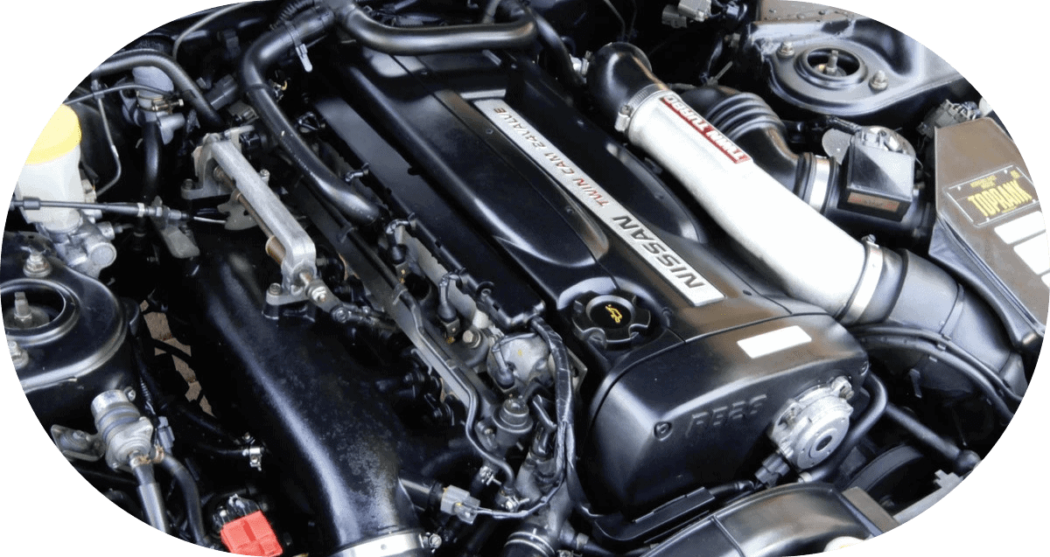As a lifelong enthusiast of Japanese automobiles, I can vividly recall the first time I witnessed the raw power and engineering brilliance of a JDM (Japanese Domestic Market) engine.
I was 15 years old, and It was a crisp autumn evening in the heart of Southern California, where a few of my father’s friends had gathered for a roadside car show. One vehicle stood out among the imported rides on the driveway—a sleek Nissan Skyline GT-R adorned with a mesmerizing RB26DETT engine.
The deep, guttural rumble that emanated from its twin-turbocharged inline-six was like a siren’s call, beckoning me to explore the enigmatic world of JDM motors.
Yes, it was JDM love at first sight for me. 🤩

From that day on, I became obsessed with understanding every intricate detail of these elusive engines, their unique characteristics, and the reasons behind their cult-like following.
In this comprehensive guide, I aim to demystify the allure of JDM motors, unlocking the secrets that make them coveted by automotive enthusiasts worldwide.
The JDM Motor Phenomenon Explained
JDM, an acronym for “Japanese Domestic Market,” refers to vehicles and components designed and manufactured specifically for the Japanese market. These vehicles often possess,
- unique features,
- technical specifications,
- and performance capabilities that differentiate them from their counterparts sold in other regions, such as the United States (USDM) or Europe.
The origins of JDM motors can be traced back to the late 1960s when Japanese automakers began experimenting with advanced engineering techniques and pushing the boundaries of performance.
As emission regulations tightened in various markets, manufacturers had to strike a delicate balance between meeting stringent standards and preserving the exhilarating driving experience that Japanese car enthusiasts craved.
This led to the creation of specialized JDM engines, tailored to the unique demands of the Japanese market. These motors were often designed with a relentless pursuit of power, responsiveness, and reliability, catering to a culture that revered the art of high-performance motoring.
One of the key advantages of JDM engines lies in their adherence to a different set of regulations compared to their USDM counterparts. Japanese emission standards, while stringent, allowed for;
- higher compression ratios,
- more aggressive camshaft profiles,
- and advanced turbocharging systems – all factors that contributed to the development of potent, rev-happy powerplants.
Navigating The Ever-Evolving JDM Landscape
The world of JDM motors is a dynamic and ever-evolving space with manufacturers continually pushing the boundaries of innovation. In recent years, the import and sale of JDM vehicles and engines have faced increasing scrutiny and regulation in various markets, including the United States.
To address safety and environmental concerns, the National Highway Traffic Safety Administration (NHTSA) and the Environmental Protection Agency (EPA) have implemented strict guidelines governing the importation and legalization of JDM vehicles and components.
These regulations aim to ensure that imported vehicles meet stringent safety standards and comply with applicable emission requirements.

Despite these challenges and regulatory limitations, the demand for authentic JDM engines and components remains strong among enthusiasts and fans seeking the ultimate in performance and exclusivity.
Reputable JDM importers and performance retailers have adapted to the changing landscape, navigating the intricate web of regulations to provide access to these coveted powerplants legally and responsibly.
One noteworthy development in the JDM space is the emergence of specialist tuning companies that offer comprehensive engine overhaul and upgrade services. These expert JDM shops meticulously rebuild and enhance JDM motors, often surpassing their original factory specifications, catering to the insatiable appetite for power and performance among enthusiasts and JDM fanatics.
If you are a track speed fanatic and performance geek, you can never go wrong with a quality JDM engine.
Now that we’ve covered the basics of what JDM motors are all about let’s conclude this comprehensive guide, with some of the popular JDM questions you’ve been asking yourself.
F.A.Q. 1: What are the most popular and sought-after JDM engine models?
– Some of the most iconic and highly coveted JDM engine models include;
- The Nissan RB26DETT (found in the Skyline GT-R),
- Toyota 2JZ-GTE (Supra),
- Honda K20A (Civic Type R),
- Mazda 13B-REW (RX-7). These engines are renowned for their exceptional power delivery, responsiveness, and tuning potential.
F.A.Q. 2: Are JDM engines more powerful than their USDM counterparts?
– In many cases, yes. JDM engines were often designed with higher compression ratios, more aggressive camshaft profiles, and advanced turbocharging systems, resulting in superior power output compared to their USDM counterparts, which are constrained by stricter emission regulations.
F.A.Q. 3: Is it legal to import and install a JDM engine in the United States?
– The legality of importing and installing a JDM engine in the United States depends on various factors, including the vehicle’s age, compliance with emission and safety standards, and adherence to federal and state regulations.
It’s crucial to work with reputable importers and follow the proper channels to ensure legal compliance.

